I made Ina Garten's 5-ingredient steak recipe. The filet mignon was just as good as some of the meals I've had at steak houses.

- I tried making Ina Garten's five-star-rated simple steak recipe at home.
- Garten's recipe called for only five ingredients: filet mignon, oil, butter, salt, and pepper.
My family and I love going out to restaurants like The Capital Grille and Ruth's Chris for a steak dinner.
But, as a family of four, we know going out to eat can be pricey — the average monthly cost of dining out is nearly $170 per person. When my husband, two teenagers, and I go out to eat, we usually spend more than that each month.
To save some cash and try to replicate a high-end meal on my own, I made Ina Garten's recipe for restaurant-quality steaks, which requires filet mignon and a few simple ingredients.
Here's what it was like to make the simple filet-mignon recipe in my kitchen.
Garten's steak recipe uses just five ingredients.
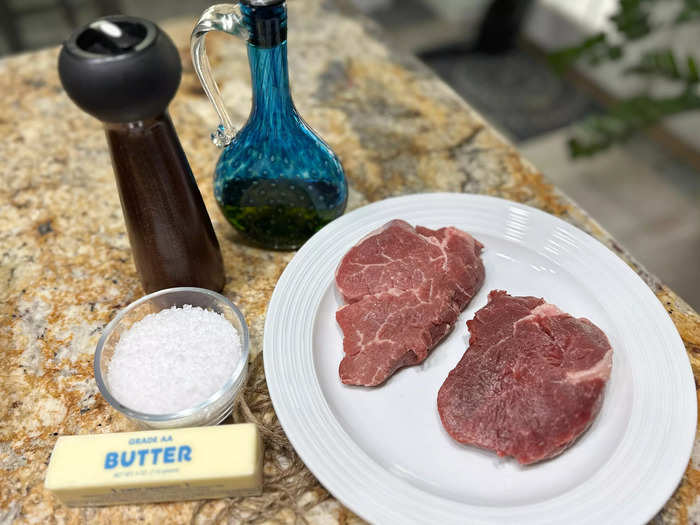
The ingredient list for Garten's restaurant-quality steak recipe was simple: four pieces of filet mignon, four tablespoons of butter, and two tablespoons each of vegetable oil, fleur de sel, and black pepper.
For this recipe, I purchased two filets weighing about half a pound each. I couldn't find fleur de sel at my local grocery store, so I used flaky Maldon sea salt.
The difference? Fleur de sel is a type of sea salt that's hand-harvested in France, and Maldon sea salt is harvested in England. Both types of salt are light and flaky, so I figured this substitution would work well.
I tied my filet mignon to help the meat keep its shape.
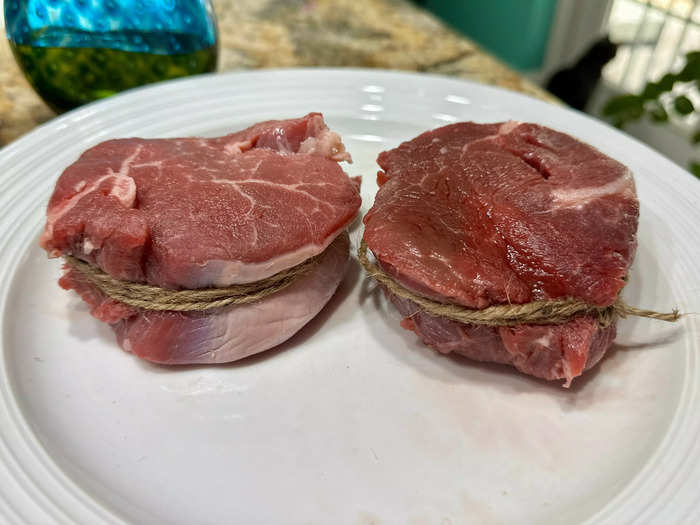
Garten's recipe called for tying each filet mignon around its perimeter to keep the steaks in a traditional oval shape.
After some research online, I discovered tying filet-mignon steaks promotes even cooking and keeps all cuts the same size for an aesthetically pleasing presentation. I used butcher's twine to tie the steaks into an oval shape.
Next, I prepared to cook the steaks in a skillet.
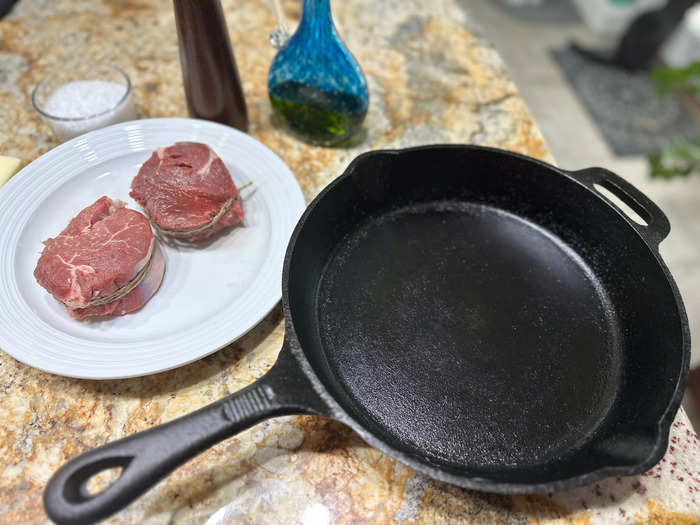
A cast-iron pan is one of my favorite kitchen tools, so I was excited to bring it out for this meal. Though I was cooking only two filets, I thought my relatively large cast-iron pan would give each piece of meat plenty of room to cook.
While the skillet heated up, I patted the steaks dry and coated them with oil, salt, and pepper.
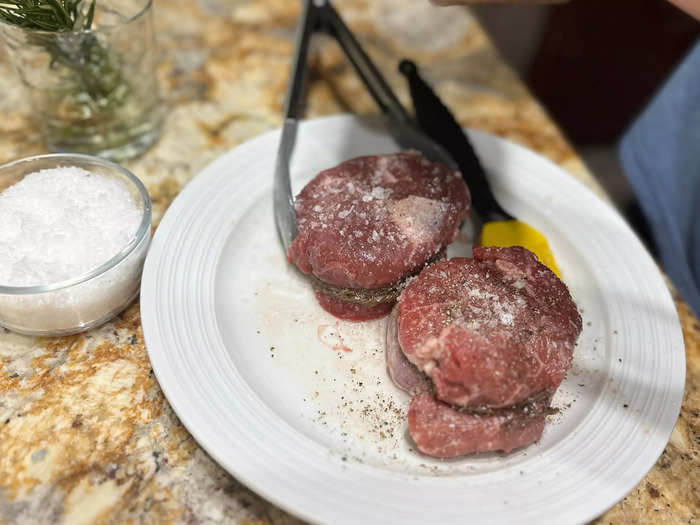
I preheated my cast-iron skillet over high heat for about five minutes. While the skillet was heating up, I patted the tied filet mignon dry and coated it in a thin layer of vegetable oil.
Using tongs to prevent my hands from getting messy, I dipped each steak in a salt-and-pepper mixture to add flavor.
Next, I seared the steaks on all sides.
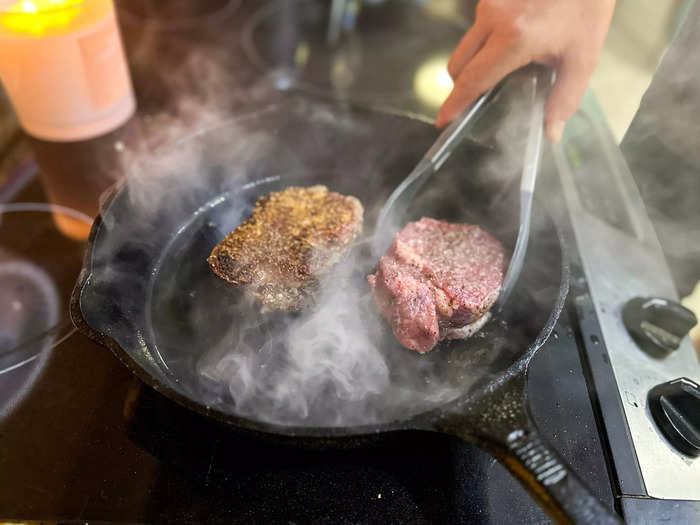
I added the steaks once my pan was hot enough for water droplets to instantly evaporate. I seared them for about two minutes on each side, including the meat's outer edges.
The instructions said to keep the house well-ventilated, and I can see why.

Searing oiled cuts of steak at high heat created lots of smoke, so I was sure to open my patio door and use a portable fan to blow some of it out of the kitchen.
By taking these measures, my house didn't smell like smoky, cooked steak for days, and the air in my home was clear.
Once the steaks were seared, it was time to cook them in the oven with some butter.
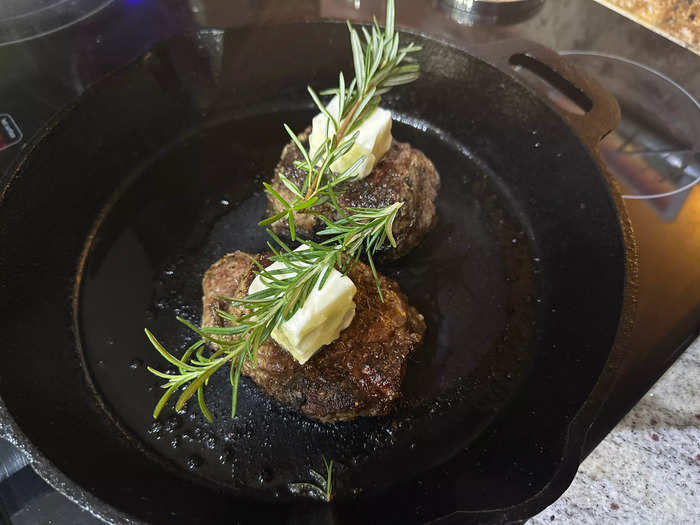
After searing, it was time to put the steaks in the oven, which I'd preheated to 400 degrees Fahrenheit. I topped each filet with a tablespoon of butter, per Garten's recipe, and added fresh rosemary from my garden.
The recipe said to leave the steaks in the oven until they reached an internal temperature of 120 degrees (for rare) or 125 degrees (for medium-rare). My steaks took about 10 minutes to reach an internal temperature of 125 degrees.
When the filets were at the right temperature, I took them out of the oven to rest.
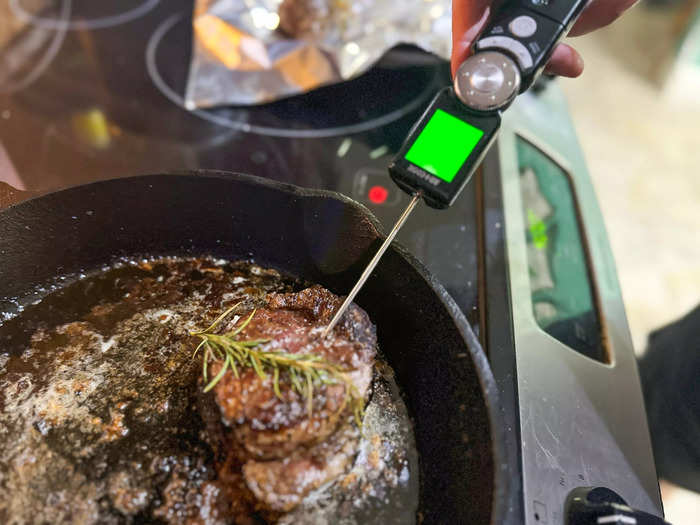
Once they were done, I removed the steaks from the oven, placed them on a cutting board, and covered them in aluminum foil.
I let the steaks rest for 10 minutes so the juices had time to evenly distribute through each cut of meat. Then, it was time to remove the butcher's twine, slice the filets, and serve.
The steaks came out perfectly medium-rare and were easy to slice.
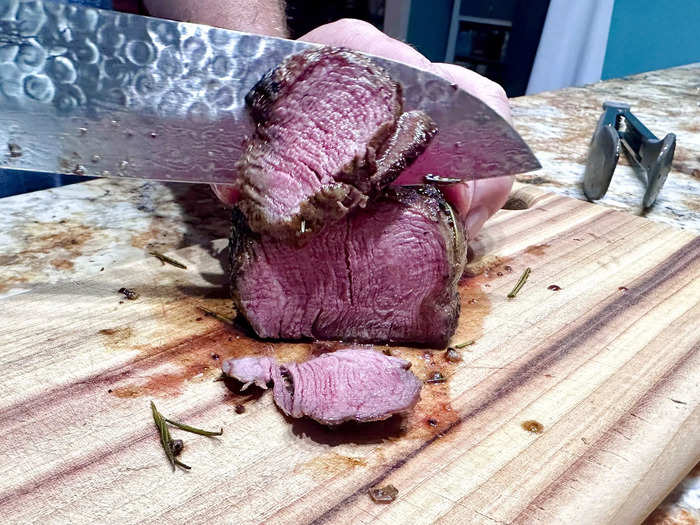
The filets came out perfectly, slicing easily and appearing just as beautiful and pink as medium-rare filets I've ordered at steak houses. I served them alongside baked potatoes.
Besides the recipe's simplicity, I was most impressed with how tender each filet came out. The meat was flavorful and juicy, and each steak's salty exterior was savory and delicious.
Most filet mignons I've had at restaurants had similar crispy exteriors and buttery-soft centers. These homemade steaks provided restaurant-quality yumminess.
I'd follow Garten's method for cooking steak again.
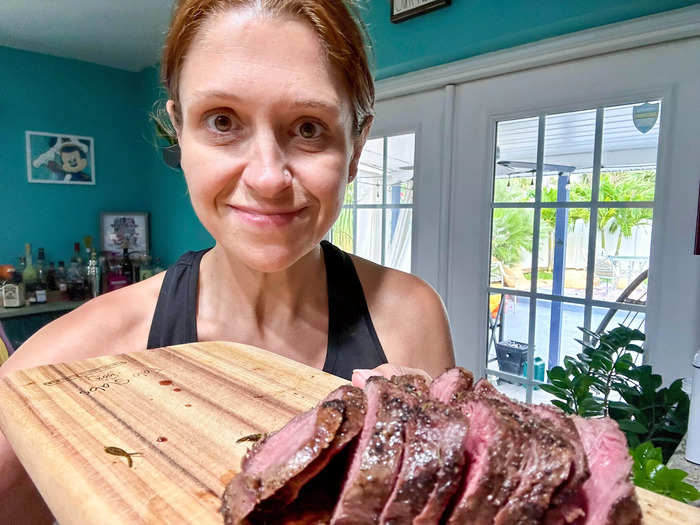
Based on my experience trying Garten's recipe for restaurant-quality steaks, I'd definitely use this method again.
This process was quick and easy to follow, and the ingredients were so simple that I already had almost everything in my pantry and refrigerator.
I thought the finished steaks were truly as delicious as those I've had at restaurants. Paired with a good baked potato, I'd have thought I was dining at a steak house, not in my own home.
Popular Right Now
Advertisement